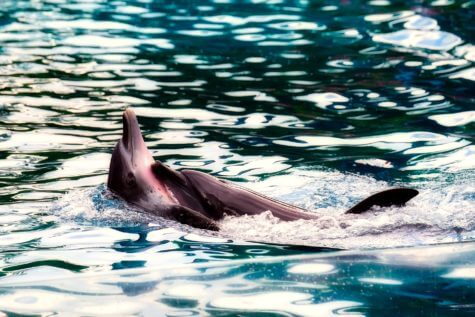Major study shows that cetaceans “talk” to one another in various dialects and work together in ways similar to human societies
STANFORD, Calif. — Encephalization: it’s a big word for the process of evolving a bigger brain. And it’s one among many things that humans, whales, and dolphins have in common.
A new study, the largest of its kind, finds it’s those bigger brains that give rise to the host of other cultural and behavior traits humans share with dolphins and whales. Known as Cetaceans, dolphins and whales also live in complex social groups, talk to and even have “names” for each other, and even watch over one another’s offspring.

Researchers determined that dolphins and whales have varying cultural characteristics and language depending on where they live.
Creating a large dataset that for the first time catalogues such shared traits across 90 different species of Cetaceans, Stanford University neuroscientist Dr. Kieran Fox worked alongside Dr. Michael Muthukrishna, an Assistant Professor of Economic Psychology at the London School of Economics, to look at how Cetaceans’ large brains evolved along with complex social structures that are much like ours.
Susanne Shultz, an evolutionary biologist in Manchester’s School of Earth and Environmental Sciences, helped come up with the idea for the study and assisted with project.
“As humans, our ability to socially interact and cultivate relationships has allowed us to colonize almost every ecosystem and environment on the planet. We know whales and dolphins also have exceptionally large and anatomically sophisticated brains and, therefore, have created a similar marine based culture,” says Shultz in a press release.
“That means the apparent co-evolution of brains, social structure, and behavioral richness of marine mammals provides a unique and striking parallel to the large brains and hyper-sociality of humans and other primates on land. Unfortunately, they won’t ever mimic our great metropolises and technologies because they didn’t evolve opposable thumbs,” she adds.
The unprecedented data set compiled by the researchers revealed a long list of behavioral and societal traits that Cetaceans have in common with humans and other primates. That list includes:
- complex alliance relationships – working together for mutual benefit
- social transfer of hunting techniques – teaching how to hunt and using tools
- cooperative hunting
- complex vocalizations, including regional group dialects – ‘talking’ to each other
- vocal mimicry and ‘signature whistles’ unique to individuals – using ‘name’ recognition
- interspecific cooperation with humans and other species – working with different species
- alloparenting – looking after youngsters that aren’t their own
- social play
Fox says these and the many other traits Cetaceans share with people raise the question of how such shared patterns of intelligence arise despite the animals having a very different brain structure than our own. And while this study will mostly serve to boost curiosity for those interested in dolphins and whales, the researchers say it may be especially useful when thinking about the behavior of human beings.
“This research isn’t just about looking at the intelligence of whales and dolphins, it also has important anthropological ramifications as well,” Muthukrishna says. “In order to move toward a more general theory of human behavior, we need to understand what makes humans so different from other animals. And to do this, we need a control group. Compared to primates, cetaceans are a more “alien” control group.”
The full study was published Oct. 16 in the journal Nature Ecology & Evolution.

Or rather, social mammals with brains above a certain complexity level display the same qualities.